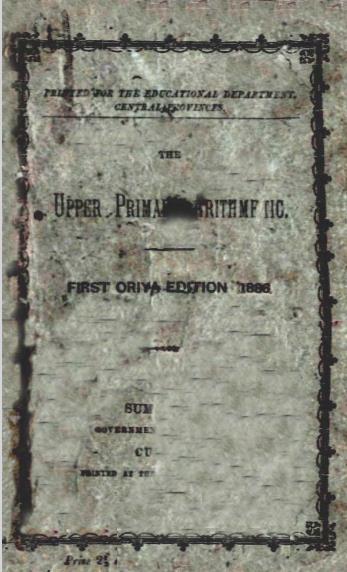The 1886 publication of the Upper Primary Arithmetic textbook marked a significant milestone in the educational landscape of Odisha. As one of the early structured educational resources available in the Odia language, this textbook played a crucial role in shaping mathematical education for upper primary students in the region. Its development coincided with a broader movement to enhance education in local languages during a period of colonial rule, reflecting a growing recognition of the importance of accessible learning material for Indian students.
The Upper Primary Arithmetic textbook is designed to meet the educational needs of students in the upper primary grades, covering essential arithmetic concepts and practical applications. This comprehensive resource introduces students to a range of topics, including basic operations such as addition, subtraction, multiplication, and division, alongside more advanced topics such as fractions, decimals, percentages, and simple geometry. The curriculum is structured to build upon foundational skills, ensuring that students develop a solid grasp of arithmetic principles.
One of the hallmark features of the textbook is its emphasis on practical problem-solving. Rather than presenting abstract concepts in isolation, the text integrates real-life applications of arithmetic. This approach not only fosters essential mathematical skills but also helps students understand the relevance of arithmetic in their daily lives, from managing finances to measuring distances and quantities.
The textbook adopts a pedagogical method that encourages student engagement and active participation. Lessons are designed to be interactive, promoting critical thinking and problem-solving skills that are vital in the learning process. The inclusion of exercises, illustrations, and examples helps to reinforce understanding, catering to various learning styles and ensuring that students can grasp complex concepts more easily.
Furthermore, the textbook addresses the importance of foundational skills, progressively advancing to more challenging material as students develop confidence and competence in their arithmetic abilities. This structured approach is critical in maintaining student interest and motivation, fostering a positive attitude toward mathematics.
The publication of the Upper Primary Arithmetic textbook in 1886 also holds cultural significance within the context of Odia education. At a time when vernacular education was gaining momentum, this text symbolized a commitment to promoting knowledge in the local language. This was particularly important in a colonial context, where the imposition of British educational practices often marginalized indigenous languages and cultures.
By providing a quality educational resource in Odia, the textbook not only facilitated arithmetic learning but also helped to reinforce cultural identity and pride. It contributed to the broader reformist movement in Odisha, which sought to empower local communities through education and knowledge in their native language.
The Upper Primary Arithmetic textbook established a foundation for future educational resources in Odia, influencing subsequent generations of educators, students, and authors. Its impact is evident in the continuing evolution of educational materials, which prioritize accessibility, relevance, and cultural context.
Even today, the principles laid out in this pioneering text resonate within the educational system in Odisha, highlighting the importance of language and cultural relevance in curriculum development. The focus on practical arithmetic skills remains relevant, ensuring that students are equipped for the challenges of everyday life and the demands of an increasingly complex world.
Books Info
| Books name | Upper Primary arithmetics |
| Author | NA |
| No Of pages | 55 |
| Publisher | NA |
| Publication | 1886 |
| Printed At | Odisha Mission Press |
| Distributor | NA |

